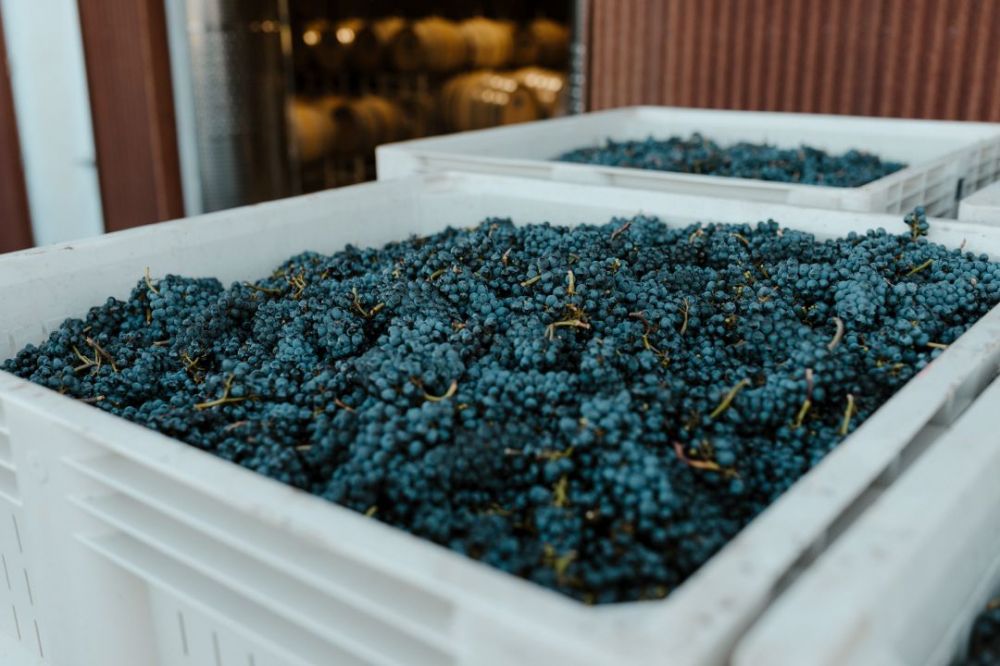Southern Strides
Embracing variety key to success

By PAUL OMUNDSON
Wine grapes were first cultivated in Southern Oregon in the mid-1800s. But it wasn’t until almost 150 years later when inventive Willamette Valley winemakers used guts, brains and branding savvy to thrust their world-class Pinot Noir onto the international stage. Industry experts pinpoint the late 1980s as the beginning of that successful, on-going campaign. It has put a deep mindset into the international wine community that Oregon means premium Pinot Noir.
Now it’s de ja vu
Recently, Southern Oregon is dramatically accelerating its own journey toward fame. Instead of emphasizing one or two varieties (Pinot Noir and Chardonnay) as Willamette Valley has done, the South is taking a different tack. It promotes the richness of being a region that successfully grows and produces over 70 varieties of wines that flourish in the Rogue and Umpqua Valleys and their nested AVAs.
Production numbers for all Oregon’s wine areas are rising. However, most dramatically is the South. A 313 percent increase in overall wine grape production during the past decade adds a bit of a swagger in the South’s wine industry today. Some say this surge may be the beginning of a new chapter.
Christopher Hudson, president of the Umpqua Valley Winegrowers’ Association, and co-owner of Lèxeme Wines in Elkton, exhibits that new spirit. Like many of his colleagues, this sixth generation Oregonian has ambitious plans. Construction on his new winery should be completed in the fall and Hudson anticipates expanding his vineyard from six to 25 acres and increasing winery annual production from 600 cases to 2,000.
Speaking of Southern Oregon in general, Hudson says “the next step is to find our own identity.” He notes that the Umpqua Valley, where he lives and works, “is much more rural and different than the Rogue Valley” farther south. “Outdoor recreation draws many people to our area too. But our understanding of each other’s wineries is better and we’re working together more,” he says. Hudson is in the process of transitioning land from hay and cattle to wine grapes,” he says.
Numerous micro-climates and land for sale
Two important factors contribute to this decade of sustained southern growth. First, Southern Oregon’s many appellations have a wide range of micro-climates. To date, approximately 74 varieties, all with specific requirements and needs, can be planted in the region. The other factor for growth is land. Currently, farmable land good for vineyards is available and, compared to the Willamette Valley, relatively inexpensive. Few premium wine regions in the world can say that.
Increasingly, growers and winemakers in the region further their education with help from Oregon State Extension, U.C. Davis and Washington State. The Oregon Wine Board and regional wine associations also contribute important information to the growing knowledge base. Everyone is now guided by research and data leading to well-informed, rather than haphazard, plantings.
“We’ve got growing resources and knowledge now to make good vineyard location selections, and to deal with fire, smoke, changing climate, public health issues and whatever else comes up,” Hudson emphasizes. “We’re ready.”
Moving to a mature economic model
“In the 1990s, Willamette Valley had its breakthrough with Pinot Noir success and the South is having similar results now with its high-end quality wines,” notes Rob McMillan, a top international wine business analyst and executive vice president of California-based Silicon Valley Bank. He publishes the “State of the Wine Industry” annual report used worldwide. McMillan is bullish on Oregon.
“Nowhere else in the United States do you have a better value for premium wines than in Oregon,” he says. “The issue for Southern Oregon is emerging from behind the huge shadow cast by the Willamette Valley. The region doesn’t have to lock onto a specific grape, like Pinot Noir. For the south, the story is more about diversity. Winemakers there should focus on dispelling the still widely-held notion that Oregon only makes Pinot Noir and Chardonnay.”
With an admiring smile he adds, “Hats off to Willamette Valley’s great branding success. Now Southern Oregon must find its own compelling brand and aggressively market that, not in competition with Willamette Valley wines but as an adjunct. The task at hand is to define and establish its own distinct identity.”
Until now, Umpqua and Rogue Valleys have run separate public relations and marketing campaigns. However, there are signs the two may come together to create an overall distinct Southern Oregon look and feel that best sums up the entire region.
“Oregon will continue to excel at premium luxury wines,” McMillan predicts. “But increasingly, it’s not just a choice of Pinot Noir and Chardonnay from the Willamette Valley. The south is rolling out a wide array of world-class wines— only enhances Oregon’s reputation for quality.”
McMillan stresses that the key to success distills to just one thing— the human factor. “When an industry moves from beginning to intermediate and then to mature, it’s due to the visionaries who came before, spurring growth with ideas for improvement.”
The global wine expert also calls out the Oregon wine industry’s inherent trait of sharing. “There’s a remarkable camaraderie all over the state and it’s exhibited very much in the south,” he says. “Sharing equipment, ideas and just about everything else for mutual benefit is really good to see.”










